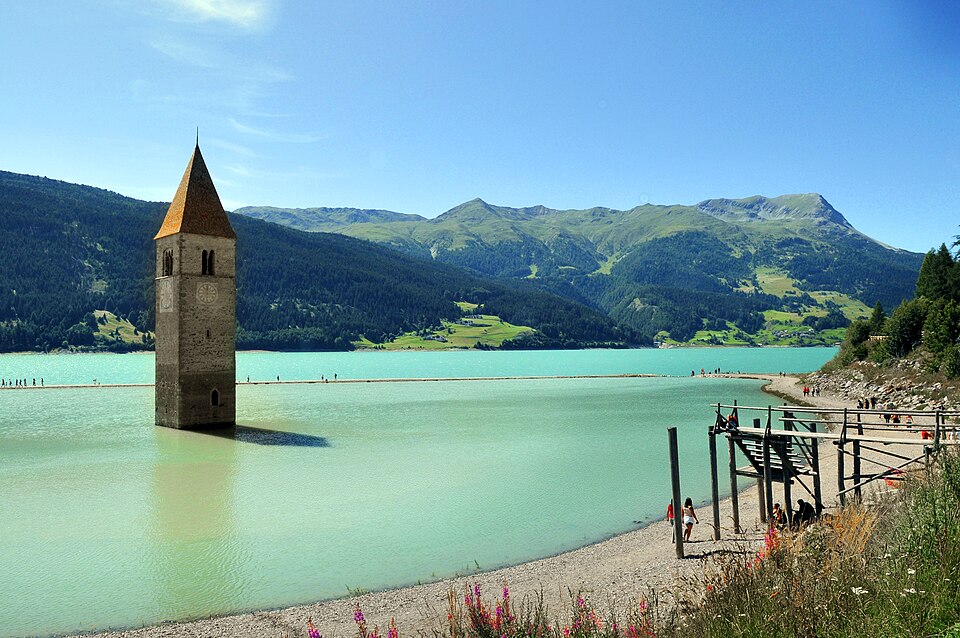
Italy conjures images of the Colosseum, Renaissance art, and perfect pasta. But in a country layered with 3,000 years of continuous civilization, the truly unexpected lurks around every corner. Forget your typical tourist treasures—Italy’s most fascinating finds are its strangest ones.
In Florence’s Museo Galileo sits a peculiar glass egg containing what looks like a withered stick. Look closer and you’ll recognize it as a human finger—specifically, the middle finger of Galileo Galilei, removed from his body in 1737 during the transfer of his remains.
This preserved digit belonged to the hand that wrote revolutionary astronomical treatises and adjusted the telescope that first revealed Jupiter’s moons. The finger points upward, as if eternally gesturing toward the heavens he studied. The museum even displays it alongside the objective lens from Galileo’s telescope, creating an oddly poetic pairing of the eye and hand that changed our view of the cosmos.
What makes this finger particularly symbolic is that Galileo was condemned by the Catholic Church for supporting heliocentrism. Some view the preserved middle finger as his eternal gesture of defiance to those who silenced him—though historians debate whether this was the actual intention behind its preservation.
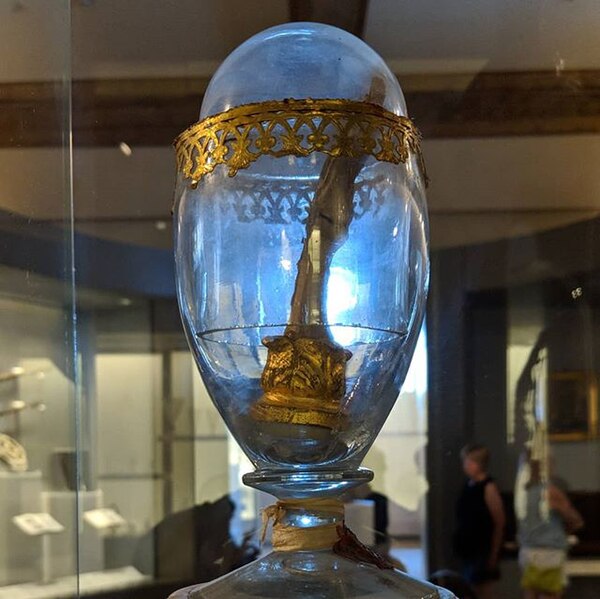
In downtown Rome, patrons at one McDonald’s can enjoy a Quarter Pounder next to a genuine slice of ancient history. During construction of this particular franchise, workers uncovered a substantial section of the Servian Wall—Rome’s earliest defensive barrier built in the 4th century BCE.
Rather than halt construction, McDonald’s incorporated the 2,500-year-old wall directly into the restaurant’s design. The juxtaposition is jarring: people casually eating Big Macs while seated next to massive stone blocks that once protected Rome from Carthaginian invaders.
This unlikely pairing perfectly encapsulates modern Rome, where history isn’t cordoned off in museums but integrated into everyday life. The golden arches meet ancient arches in a setting that could only exist in Italy, where the past and present constantly collide over lunch.
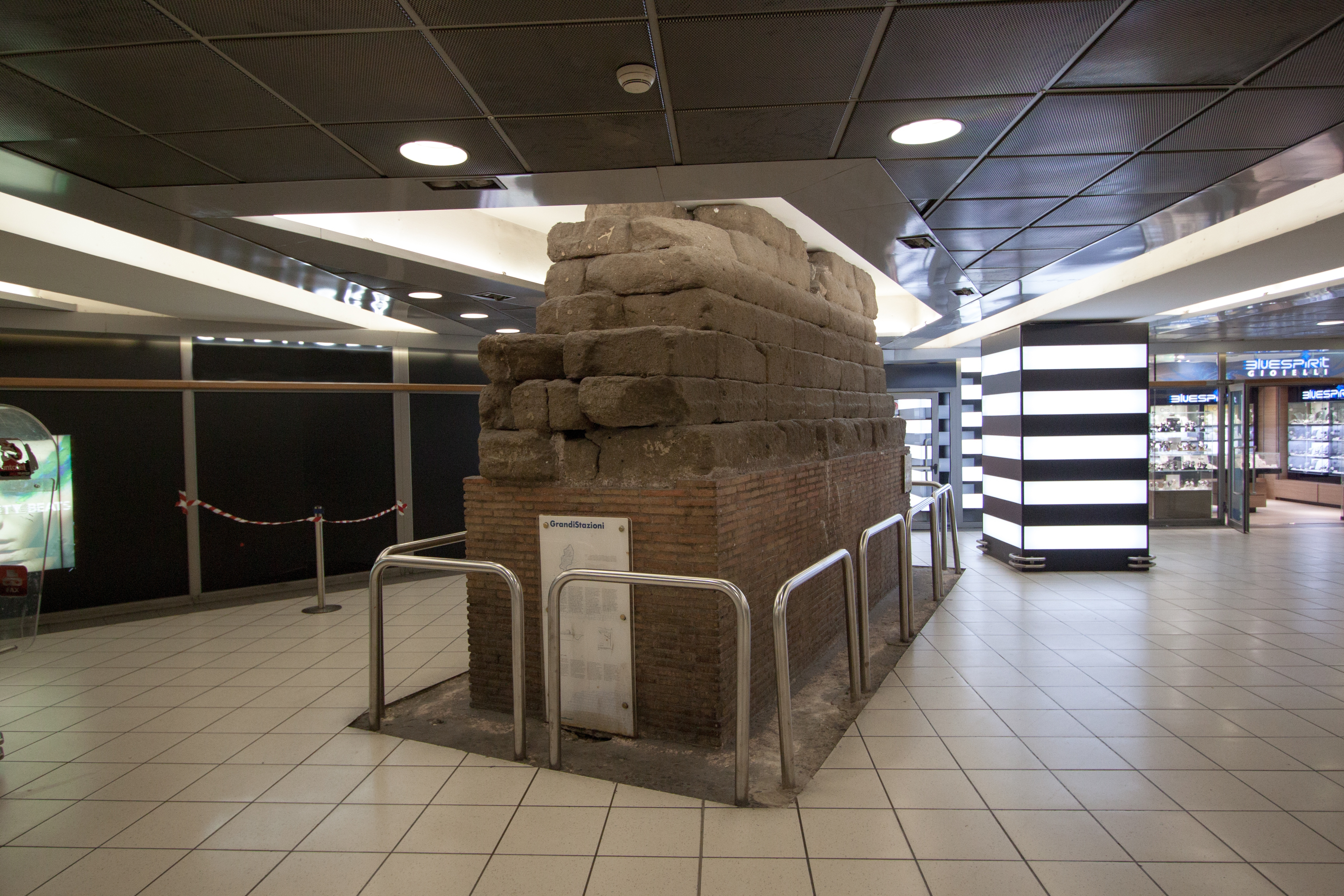
While Britain claims the legend of King Arthur, Italy has an actual sword embedded in stone. Inside the Montesiepi Chapel near Siena sits a sword thrust into solid rock, dating to the 12th century.
This isn’t a tourist gimmick. Scientific analysis confirms the sword’s age, and ground-penetrating radar shows it genuinely penetrates deep into the stone below.
The sword belonged to Galgano Guidotti, a wealthy knight who, after visions of Archangel Michael, renounced his worldly possessions to become a hermit. When declaring his change of heart, Guidotti supposedly plunged his sword into rock to symbolize his transformation—and miraculously, the stone yielded like butter.
Most remarkably, the chapel also displays mummified hands nearby. Legend claims these belonged to a would-be thief who attempted to remove the sword and was attacked by wolves. Modern analysis dates these preserved appendages to the right time period, adding another layer of mystery to this medieval marvel.

In the southern region of Basilicata, the hillside town of Pietragalla features dozens of curious stone structures that look like they’ve been transplanted directly from Middle-earth. These rounded, semi-subterranean dwellings with circular doorways are known locally as “palmenti.”
Unlike movie sets, these structures served a practical purpose: they were traditional wine-pressing facilities, some dating back to the 15th century. The unique design—partially built into the hillside with thick stone walls—maintained ideal temperatures for fermenting wine, while the different-level stone vats allowed gravity to move the juice through production phases.
Used continuously until the mid-20th century, these structures now form an urban park, with some converted into artist studios and cultural spaces. The entire complex creates a surreal landscape that feels distinctly non-Italian, yet represents ingenious local adaptation to the environment.
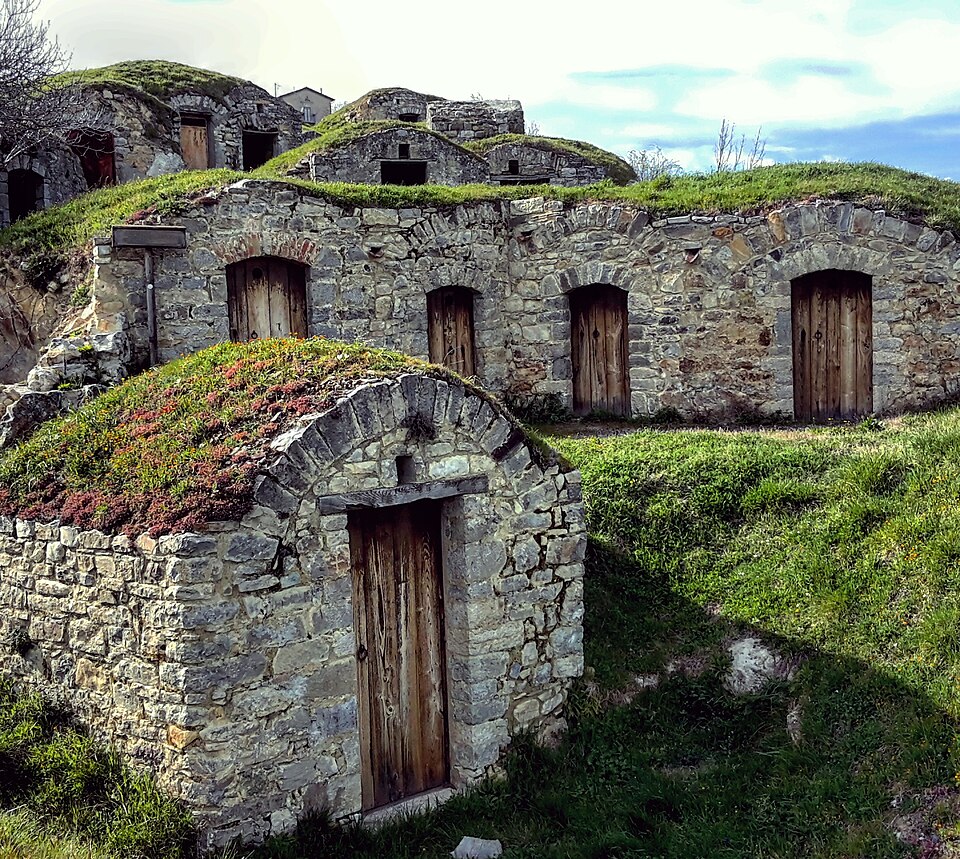
Behind the altar of the Basilica of Santa Maria e San Donato on Venice’s Murano island hang enormous bones that local tradition identifies as dragon remains. These massive “ribs” are displayed prominently as if they were sacred relics.
According to legend, in the 12th century, Saint Donatus slew a fearsome dragon that had been terrorizing the Greek island of Cephalonia. When Venetians later acquired the saint’s remains, they brought these “dragon bones” as proof of his heroic deed.
Scientists have a different explanation: the bones likely belong to a large extinct mammal, possibly a whale. Yet the church makes no effort to correct the dragon narrative, allowing visitors to experience the same wonder that medieval pilgrims felt centuries ago.
This blend of faith, folklore, and proto-paleontology reflects how pre-scientific communities made sense of fossils and remains they couldn’t otherwise explain—yet the basilica’s presentation suggests that sometimes a good story matters more than scientific accuracy.
In the strange sculpture garden known as Parco dei Mostri (Park of Monsters) in Bomarzo, stands a peculiarly unsettling building—a house intentionally built on a severe tilt. Called the Leaning House or Casa Pendente, it’s designed to disorient visitors completely.
Created in the 16th century by grieving nobleman Pier Francesco Orsini after his wife’s death, the garden features massive stone sculptures of monsters, mythological creatures, and this deliberately askew building that makes visitors lose their sense of balance and direction.
Inside, the tilted floors and doorways create instant vertigo—a physical manifestation of Orsini’s emotional state after his loss. Renaissance furniture sits at odd angles, and water appears to flow uphill due to the disorienting perspective.
The inscription near the entrance reads “just to set the heart free”—suggesting this deliberately unsettling experience was designed as a form of emotional catharsis through architectural disorientation.
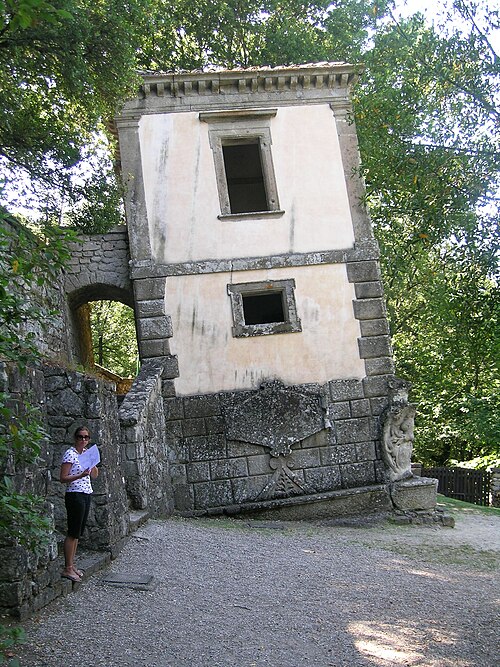
In a striking departure from traditional architecture, Milan’s Bosco Verticale (Vertical Forest) consists of two residential towers completely covered in more than 900 trees and 20,000 plants. These living skyscrapers look like buildings that nature is actively reclaiming, except they were deliberately designed this way.
Completed in 2014, these apartments don’t just feature balconies with potted plants—they integrate a complete forest ecosystem into their structure. Specialized crews of “flying gardeners” rappel down the facades to maintain this vertical ecosystem.
The buildings provide the equivalent of 7.5 acres of forest in the footprint of two tower blocks, absorbing 30 tons of carbon dioxide annually while producing oxygen and filtering particulate pollution from Milan’s urban air.
Each apartment offers residents views filtered through their own private forest, creating living spaces that change colors with the seasons and attract 20 species of birds that have established nests in this urban canopy.

Among Pompeii’s many wonders are loaves of bread preserved not by design but by catastrophe. When Mount Vesuvius erupted in 79 CE, the intense heat carbonized organic materials rather than burning them to ash, creating perfect three-dimensional carbon copies of perishable items.
The most haunting of these are intact loaves of bread, still bearing the baker’s stamp and divided into eight sections for easy breaking. These 2,000-year-old loaves look remarkably like they might have just come from the oven, except they’re completely carbonized.
Analysis of these loaves reveals they were made from sourdough and contained a remarkably similar yeast strain to modern bread. Some even show the string marks used to carry them home from the bakery.
Most poignantly, many were found in ovens, abandoned during baking as Pompeians fled the eruption—ordinary lives interrupted in their most mundane moments, preserved as perfect time capsules of daily Roman life.
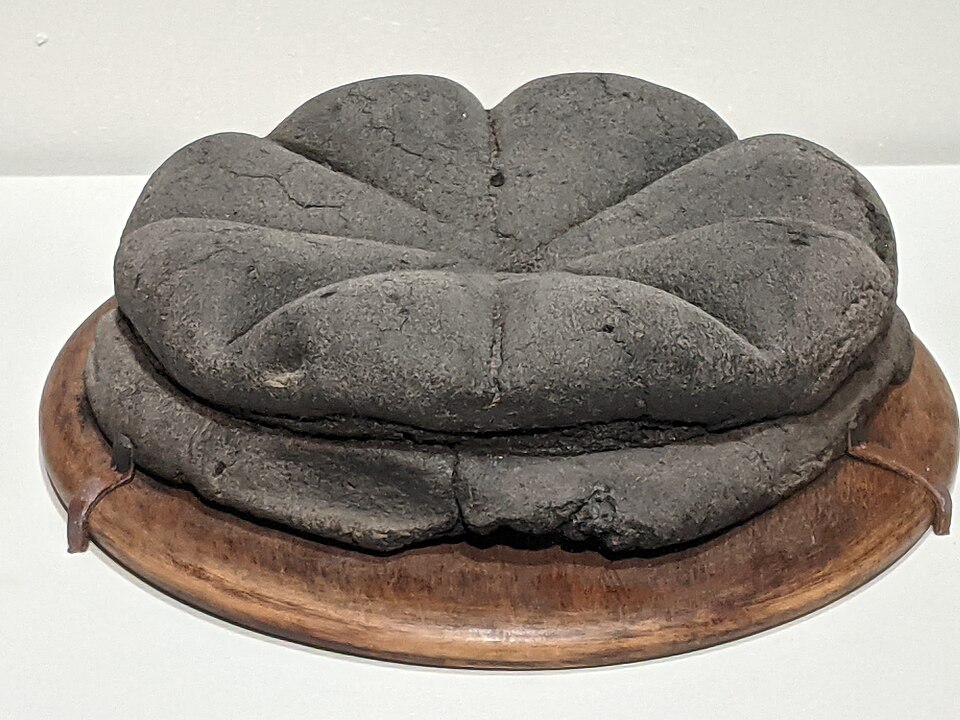
Rising 125 feet above a busy Roman intersection stands a genuine ancient pyramid—and most tourists walk right past it without realizing what they’re seeing. The Pyramid of Cestius was built around 18-12 BC as a tomb for Gaius Cestius, a wealthy Roman magistrate who apparently had strong opinions about Egyptian architecture. The inscription on its marble face documents that it took exactly 330 days to build—a timeline that would make modern contractors weep with envy.
This isn’t some medieval folly or Renaissance curiosity—it’s older than the Colosseum and built with the same precision as its famous Egyptian counterparts. The pyramid was inspired by Rome’s recent military campaigns in Egypt and Nubia, reflecting the fashion for all things Egyptian that swept through Rome after those conquests.
Fascinatingly, the pyramid survived because it was incorporated into the Aurelian Walls in the 3rd century AD, giving it both protection and a practical defensive purpose that kept it from being demolished like Rome’s other ancient pyramids.
In the Abruzzo region, there’s a fountain that dispenses red wine 24/7, for free.
Set up by a local vineyard along a popular pilgrimage route, the wine fountain at the Dora Sarchese winery is meant to quench tired walkers making the 300km trek to Ortona. But don’t expect a Chianti tasting menu—this is rustic, unfiltered wine, straight from the barrel.
Every summer, the Romanesque bell tower of Curon Venosta emerges eerily from the waters of Lake Resia like a mirage. That’s because the entire village is underwater.
In 1950, the Italian government flooded the valley to create a hydroelectric reservoir, submerging the original town. Today, only the tower remains above the surface. When the lake freezes in winter, you can walk out to it. Locals say church bells can still be heard ringing—despite having been removed decades ago.

One Italian village spent over €100,000 and years of effort to build a fake sun. The village of Viganella sits so deep in a valley that for 83 days every winter, from early November to early February, the mountains completely block any direct sunlight. In 2006, the town’s mayor and an architect decided to fight back against the darkness. They installed a giant, 8x5 meter steel mirror on a nearby mountainside that is computer-controlled to track the sun and reflect its light down into the village square.
Contrary to what you might expect, the mirror doesn’t provide much heat. Instead, its true power is symbolic. The reflected sunshine revitalized the once-dwindling community, transforming a geographical curse into a testament to human ingenuity and a major tourist draw.
In 2021, archaeologists in Pompeii uncovered a thermopolium—essentially an ancient Roman McDonald’s—complete with beautifully decorated frescoes depicting two ducks hanging upside down, a rooster, a dog on a leash, and a nereid riding a sea-horse. The establishment sold ready-to-eat food to busy Romans who, apparently, had the same relationship with takeout that we do.
Here’s what makes this discovery mind-bending: the animals depicted were likely butchered and sold at the food shop, with poultry eaten alongside wine or hot drinks. It’s like finding a modern restaurant with Instagram-worthy murals of exactly what’s on the menu, except these murals have been perfectly preserved under volcanic ash for two millennia. The Romans weren’t just pioneers of engineering and law—they invented fast food branding.
Italy’s strangest treasures reveal a country far more complex than travel brochures suggest. Beyond the grand tourist sites lies another Italy—one filled with enigmatic oddities that challenge our expectations and reveal the layers of history, belief, and human creativity that make this country endlessly fascinating.
The next time you find yourself wondering “what is this thing?” while traveling through Italy, remember that the strangest discoveries often tell the most compelling stories. Whether it’s a preserved finger pointing to the stars or ancient bread that will never be eaten, these unexpected encounters connect us to the full, messy, wonderful spectrum of human experience that has played out on the Italian peninsula for millennia.
Download the What Is This Thing app and identify anything with a single photo.